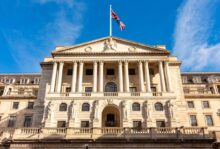
The move was widely anticipated and reflects a pragmatic response to the shifting economic landscape.
At its meeting ending yesterday (7 May 2025), the MPC voted by a majority of 5:4 to reduce the bank rate by 0.25 percentage points to 4.25%. Two members preferred to reduce the bank rate by 0.5 percentage points to 4%, while two members preferred to maintain the bank rate at 4.5%.
The MPC said the rate cut reflected continued progress in disinflation, though with risks to inflation remaining in both directions.
What the base rate cut means for mortgages
The base rate reduction will mean cheaper payments for homeowners with tracker mortgages and some other variable rate deals too – depending on whether lenders pass on the rate cut in full. Those looking for a new fixed rate mortgage may be able to find cheaper deals than previously.
Nicholas Mendes, head of marketing at John Charcol, said: “While fixed rates have already priced in much of this decision, the cut will support sentiment in the housing market at a time when affordability has been stretched and buyer activity has slowed. It also gives lenders a bit more breathing room to remain competitive, which could help stimulate demand, especially among first-time buyers.

How life insurance can benefit your health and wellbeing over the decades
Sponsored by Post Office
“That said, this is unlikely to mark the start of a rapid easing cycle. Wage growth remains strong, fiscal changes are still filtering through, and services inflation is well above target. The bank will need to tread carefully from here. While today’s cut is helpful, borrowers should continue to plan with caution. Locking in a competitive fixed rate still makes sense for many, particularly if there is any doubt about future income or affordability.”
What the base rate cut means for savers
Banks have been factoring in the likelihood of multiple interest rate cuts for a number of weeks, so it’s unlikely we’ll see dramatic reductions in the savings rates on offer.
However, if you’re sitting on savings, then it’s still worth double checking the rate your bank is paying and what the terms are. There are several savings accounts available that beat inflation, meaning you can make your money work for you.
Simon Merchant, CEO of Flagstone, said: “Instant access accounts are most vulnerable to early reductions, given their variable nature. Savers looking to secure higher rates should consider fixed-term accounts – especially if they’ve already set aside enough for emergencies.
“Whether you have £1,000 or £100,000 to save, staggering your savings across multiple fixed term accounts so that you have portions of your savings maturing at regular intervals is one of the most efficient ways to manage your cash. It’s a clever way to maximise interest earning potential on all the best offers in the market, without ever having to wait too long for some of your savings to become available.
“Fix your savings soon, but watch out for hidden terms. No-strings-attached accounts are a great option, but so too are rates that include some sort of bonus or lock-in period, provided you open these accounts knowing what you’ve signed up to.”




